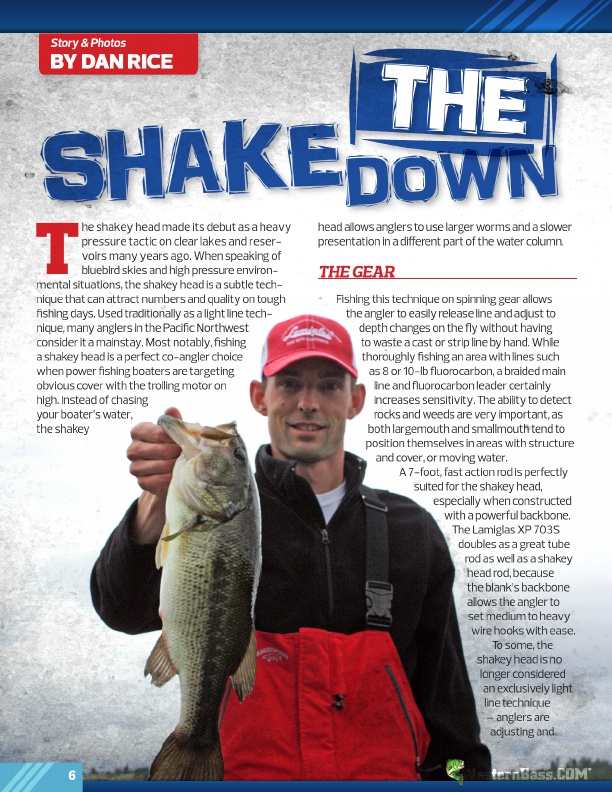
Story & Photos
SHAKE THE
BY DAN RICE
DOWN
T
he shakey head made its debut as a heavy
pressure tactic on clear lakes and reser-
voirs many years ago. When speaking of
bluebird skies and high pressure environ- mental situations, the shakey head is a subtle tech-
nique that can attract numbers and quality on tough
fishing days. Used traditionally as a light line tech-
nique, many anglers in the Pacific Northwest
consider it a mainstay. Most notably, fishing
a shakey head is a perfect co-angler choice
when power fishing boaters are targeting
obvious cover with the trolling motor on
high. Instead of chasing
your boater’s water,
the shakey
head allows anglers to use larger worms and a slower presentation in a different part of the water column.
THE GEAR
Fishing this technique on spinning gear allows
the angler to easily release line and adjust to
depth changes on the fly without having
to waste a cast or strip line by hand. While
thoroughly fishing an area with lines such
as 8 or 10-lb fluorocarbon, a braided main
line and fluorocarbon leader certainly
increases sensitivity. The ability to detect
rocks and weeds are very important, as
both largemouth and smallmouth tend to
position themselves in areas with structure
and cover, or moving water.
A 7-foot, fast action rod is perfectly
suited for the shakey head,
especially when constructed
with a powerful backbone.
The Lamiglas XP 703S
doubles as a great tube
rod as well as a shakey
head rod, because
the blank’s backbone
allows the angler to
set medium to heavy
wire hooks with ease.
To some, the
shakey head is no
longer considered
an exclusively light
line technique
– anglers are
adjusting and
6 ®